AAC-friendly Library Visits: 5 PrAACtical Ideas
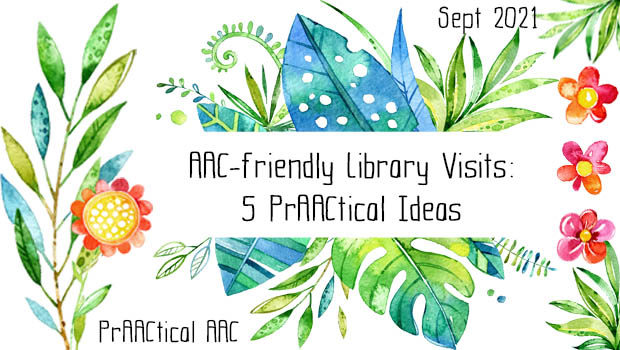
The community of AAC practitioners and families includes many people who have strong connections to their school or community libraries. In today’s post, we share some thoughts and resources on making library visits more accessible and engaging to those with AAC needs.
- Social narratives are a wonderful, evidence-based way to help AAC learners prepare for the experience of visiting the library. These work best when the pictures and text are customized to fit the specific library situation that the AAC learner will encounter. Here are some examples.

- Nicole Caldwell’s example of a social narrative
- Lancaster Public Library
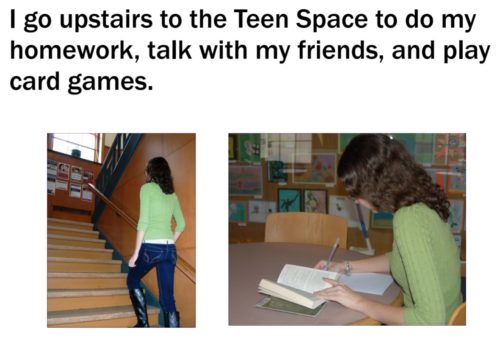
- Take a video tour of the library, like this one from Powell River Library. If your local library doesn’t have an online video tour, suggest that they create one or, if you’re feeling ambitious, create your own.
- Create a visual schedule or picture checklist for the library visit. Renee Grassi, of the Association for Library Service to Children, has more to say about that here.
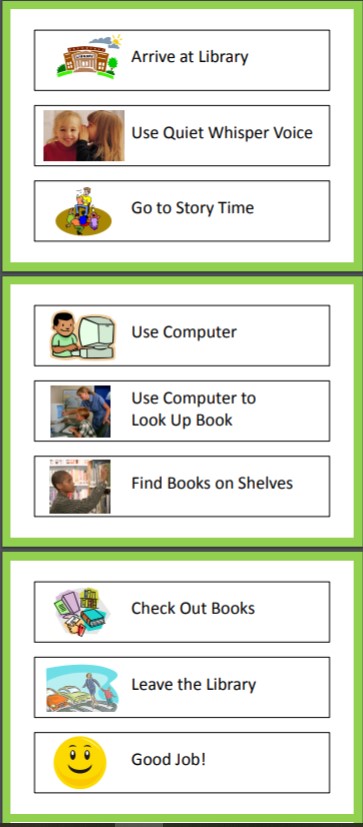
- You can also check out this example by MacKenzie Goold
- Consider the library rules and expected behaviors at the library and make a plan for those.
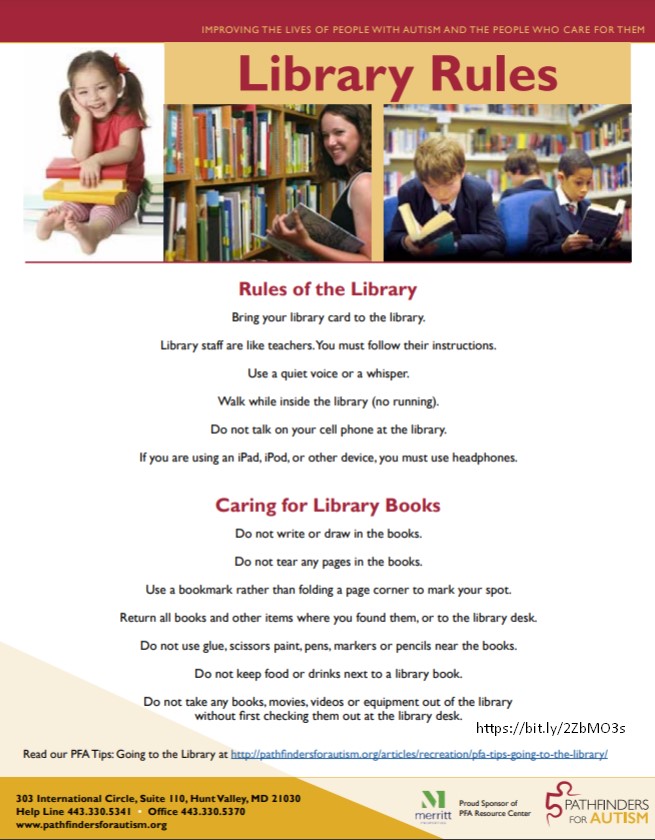
- In some cases, this may mean some advanced preparation with the AAC user, such as being aware of loudness levels when speaking and/or practicing quiet voices. Visual supports, like this one from Stone Alexis using LessonPix, can be helpful.
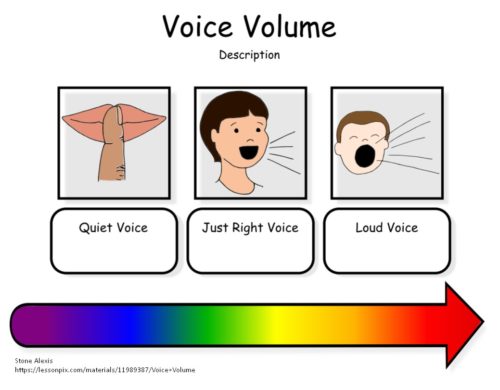
- This can also include working with library staff in advance regarding any adjustments or accommodations that can be made to make the experience a more inclusive one. For example, we can help them become more accepting of behaviors that are different or unexpected, such as pacing, humming, flapping, and rocking. We can also work with them to identify a chill zone where someone can go to unwind if they need to get away from the main space.
- In some cases, this may mean some advanced preparation with the AAC user, such as being aware of loudness levels when speaking and/or practicing quiet voices. Visual supports, like this one from Stone Alexis using LessonPix, can be helpful.
- Ensure that the AAC user has access to appropriate communication strategies and vocabulary. See this core board with library-related vocabulary by Heather Donatelli as an example of the sorts of words that might be helpful.
Before you go, check out these examples of AAC in action at the library by teens and adults who work with Dreamweavers Unlimited.
Do you have tried-and-true suggestions for making library visits more inviting and accessible by people who use AAC? We’d love to hear about them.
Filed under: Featured Posts, PrAACtical Thinking
This post was written by Carole Zangari

1 Comment
I love seeing AAC users being encouraged to visit their libraries! I’m actually presenting on this very thing (from a librarian’s perspective) at ATIA this year.
But as a librarian, I want to push back on some of those library rules. There are definitely libraries that still ask for whispers, but they are really the minority. Regular inside voices are more typical, and most childrens spaces have play areas that absolutely get louder. Many teen spaces have hang out areas that get louder, as well, because noise is part of welcoming groups of youth!
So I definitely recommend caregivers visit their own libraries to see how families use the space. And also look out for Sensory Storytimes and other programming for disabled kids, which are available at many, many libraries.